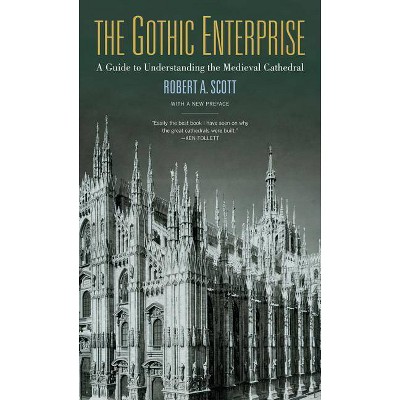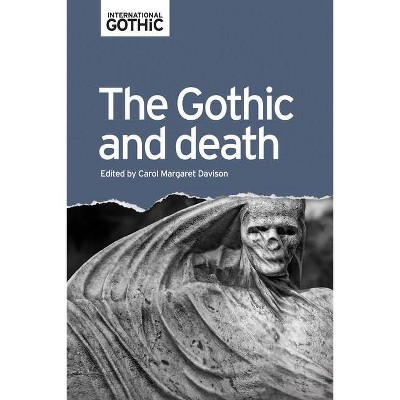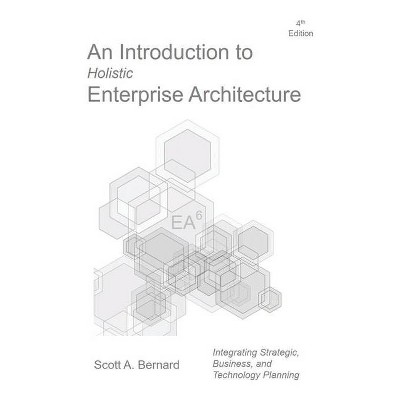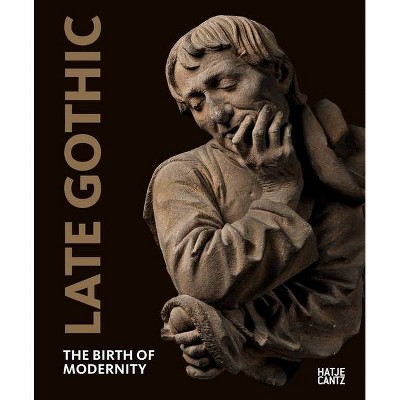The Gothic Enterprise - by Robert A Scott (Paperback)

Similar Products
Products of same category from the store
AllProduct info
<p/><br></br><p><b> About the Book </b></p></br></br>"This is easily the best book I have seen on why the great cathedrals were built. The breadth of Scott's scholarship is astonishing. As well as art history and architecture, he brings to bear his knowledge of subjects as wide apart as engineering, the sociology of religion, and the medieval economy. Only a handful of books truly throw light on the mystery of the cathedrals, and this is one of them."--Ken Follett, author of "Pillars of the Earth" <BR>"Written in a lucid style and illustrated by dozens of sketches and photographs, this interdisciplinary survey is the best introduction to its subject now in print."--Gene Brucker, author of "Florence: The Golden Age, 1138-1737" <BR>"Scott has given us a book of wonderful breadth and erudition with a refreshingly light touch. He describes vividly the social, political, and religious background to the great flowering of the Gothic cathedrals of Europe in the thirteenth and fourteenth centuries, and the strange mixture of motives that drove this astonishing building program. He is equally interested in the hard practical mechanics of hewing timber, erecting scaffolding, quarrying stone, transporting and hauling these materials as he is in the religious and liturgical symbolisms and conceptual schemes of the architects and their royal paymasters. Gothic cathedrals are astounding monuments to the aspirations of the human spirit reaching out to the divine, and this is a splendid introduction to the medieval worlds that produced them, written by an enthusiastic guide who really knows his subject and loves it."--Hugh Dickinson, Dean Emeritus of Salisbury Cathedral <BR>"Gothic architecture is notoriously difficult to represent verbally, but in Scott's book the joy so many people find in discovering these breathtakingly beautiful monuments is palpable."--Stephen Murray, author of "Notre Dame, Cathedral of Amiens: The Power of Change in Gothic" <BR>"In this splendid book Scott writes precisely, clearly, and with a love for both words and his readers. Those who read these pages will come away enlightened, inspired, and with a more profound grasp of our civilization."--Neil J. Smelser, University Professor of Sociology, Emeritus, University of California, Berkeley<p/><br></br><p><b> Book Synopsis </b></p></br></br>The great Gothic cathedrals of Europe are among the most astonishing achievements of Western culture. Evoking feelings of awe and humility, they make us want to understand what inspired the people who had the audacity to build them. This engrossing book surveys an era that has fired the historical imagination for centuries. In it Robert A. Scott explores why medieval people built Gothic cathedrals, how they built them, what conception of the divine lay behind their creation, and how religious and secular leaders used cathedrals for social and political purposes. As a traveler's companion or a rich source of knowledge for the armchair enthusiast, <i>The Gothic Enterprise</i> helps us understand how ordinary people managed such tremendous feats of physical and creative energy at a time when technology was rudimentary, famine and disease were rampant, the climate was often harsh, and communal life was unstable and incessantly violent.<br /><br />While most books about Gothic cathedrals focus on a particular building or on the cathedrals of a specific region, <i>The Gothic Enterprise</i> considers the <i>idea</i> of the cathedral as a humanly created space. Scott discusses why an impoverished people would commit so many social and personal resources to building something so physically stupendous and what this says about their ideas of the sacred, especially the vital role they ascribed to the divine as a protector against the dangers of everyday life.<br /><br />Scott's narrative offers a wealth of fascinating details concerning daily life during medieval times. The author describes the difficulties master-builders faced in scheduling construction that wouldn't be completed during their own lifetimes, how they managed without adequate numeric systems or paper on which to make detailed drawings, and how climate, natural disasters, wars, variations in the hours of daylight throughout the year, and the celebration of holy days affected the pace and timing of work. Scott also explains such things as the role of relics, the quarrying and transporting of stone, and the incessant conflict cathedral-building projects caused within their communities. Finally, by drawing comparisons between Gothic cathedrals and other monumental building projects, such as Stonehenge, Scott expands our understanding of the human impulses that shape our landscape.<p/><br></br><p><b> From the Back Cover </b></p></br></br>This is easily the best book I have seen on why the great cathedrals were built. The breadth of Scott's scholarship is astonishing. As well as art history and architecture, he brings to bear his knowledge of subjects as wide apart as engineering, the sociology of religion, and the medieval economy. Only a handful of books truly throw light on the mystery of the cathedrals, and this is one of them.--Ken Follett, author of <i>Pillars of the Earth</i><br /><br />Written in a lucid style and illustrated by dozens of sketches and photographs, this interdisciplinary survey is the best introduction to its subject now in print.--Gene Brucker, author of <i>Florence: The Golden Age, 1138-1737</i><br /><br />Scott has given us a book of wonderful breadth and erudition with a refreshingly light touch. He describes vividly the social, political, and religious background to the great flowering of the Gothic cathedrals of Europe in the thirteenth and fourteenth centuries, and the strange mixture of motives that drove this astonishing building program. He is equally interested in the hard practical mechanics of hewing timber, erecting scaffolding, quarrying stone, transporting and hauling these materials as he is in the religious and liturgical symbolisms and conceptual schemes of the architects and their royal paymasters. Gothic cathedrals are astounding monuments to the aspirations of the human spirit reaching out to the divine, and this is a splendid introduction to the medieval worlds that produced them, written by an enthusiastic guide who really knows his subject and loves it.--Hugh Dickinson, Dean Emeritus of Salisbury Cathedral<br /><br />Gothic architecture is notoriously difficult to represent verbally, but in Scott's book the joy so many people find in discovering these breathtakingly beautiful monuments is palpable.--Stephen Murray, author of <i>Notre Dame, Cathedral of Amiens: The Power of Change in Gothic</i><br /><br />In this splendid book Scott writes precisely, clearly, and with a love for both words and his readers. Those who read these pages will come away enlightened, inspired, and with a more profound grasp of our civilization.--Neil J. Smelser, University Professor of Sociology, Emeritus, University of California, Berkeley<p/><br></br><p><b> About the Author </b></p></br></br><b>Robert A. Scott </b>is Associate Director Emeritus of the Center for Advanced Study in the Behavioral Sciences at Stanford University, and was previously Professor of Sociology at Princeton University for 18 years. He is the coauthor of <i>Why Sociology Does Not Apply </i>(1979); author of <i>Making of Blind Men </i>(1969); editor of several collections of essays about stigma, deviancy, and social control; and author of numerous articles, book chapters, and essays on related topics.
Price History
Cheapest price in the interval: 22.49 on October 22, 2021
Most expensive price in the interval: 22.49 on November 8, 2021
Price Archive shows prices from various stores, lets you see history and find the cheapest. There is no actual sale on the website. For all support, inquiry and suggestion messages communication@pricearchive.us




















